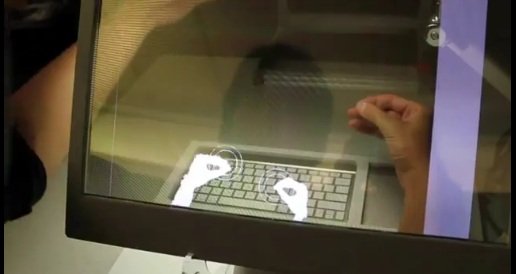Microsoft Kinect was and is a huge success. It has definitely changed the rules of the game while a user interacts with a computing device. Apart from capturing a place in the Guinness Book of World records, it also captured a place in to the hearts of millions of its users thanks to its real-world applications.
Carrying this forward, a team of researchers from Microsoft Applied Sciences have tried in pushing the bar of human interaction with a computer and boy, I can see they have succeeded. Armed with a Samsung OLED transparent TV, Kinect sensors and some ‘magic’ code, this enthusiastic group has successfully demonstrated interacting with objects on a system/desktop in 3D environment. This means, they can actually ‘touch’ folders, open applications using real-hand gestures; in short, they can possibly do almost everything with their hands what we do with a mouse/keyboard.
A user can easily open up the desktop screen and enter input through the attached keyboard. This see-through screen allows a user to directly interact with the virtual desktop in a 3D environment. A user can switch between windows, browse pages on the web and perform daily tasks on this see-through 3D desktop using his hand/finger gestures, thanks to the in-depth motion sensors. A user can also switch between 2D and 3D environments.
This can open up a wide range of possibilities when the concept of a virtual desktop is considered. Objects behind the transparent screen can be played with as required and manipulated to acquire the desired results. Instead of pressing ‘Alt+Tab’ on my present desktop, I can easily move my hand back and forth to browse between various windows on the desktop. Charming!
This concept can again throw many possible applications in sectors like business, education, health etc. Kudos to the Microsoft Applied Sciences team for thinking ‘different’.
Do you agree?

Leave a Reply